The parish Church dedicated to the Immaculate Conception where I worship is an ancient and venerable building. Constructed in the 19th century, it is in the old French Gothic style with magnificent stained glass windows, gothic arches and a high vaulted roof. The belfry is crowned with a set of bells calling people to worship and marking the passage of time by ringing out the hours for the Angelus. It has an unmistakable Churchy feeling to it. No one who gazes on it, even from afar, will mistake it for anything other than what it is. Domus Dei et Porta Caeli. The House of God and Gate of Heaven. Its an oasis of tranquility in the midst of the hustle and bustle of the Pulau Tikus business district. A rock amongst the flowing masses of people and vehicles hurriedly going about their daily business.
Come 2011, we will be celebrating our bi-centenary yet no cracks mar the facade. This is a building built to stand the test of time, to be a monument to God through the ages where the Mysteries will be celebrated and where we can see and participate in, as through a glass, darkly, the glory of the angelic worship that we will one day join in the courts of Heaven should we endure in faithfulness to the end.
In the Lady Chapel, ancient banners and tapestries, once used in Corpus Christi processions adorn the walls. Liturgical vessels, which are pieces of art in themselves lay on tables. The polished brass candle stands are of an old French vintage, beautifully sculptured with intricate designs of the Sacred Heart of Jesus, the Immaculate Heart of Mary, the Agnus Dei. Similarly, the Paschal candle stand has various Catholic motifs set in high relief. The tabernacle lamps are of the hanging variety that can still be found in the Church of the Holy Sepulchre in Jerusalem, burning perpetually before the site of Calvary. The monstrance has an ethereal quality about, made as beautiful as human hands could to make it a fitting receptacle for the Body of Christ that is lifted for all to adore and worship.
A set of illuminated altar cards containing the ancient Roman Canon, Lavabo and the Final Epistle are set in a brass triptych, the words of consecration, HOC EST CORPUS MEUM standing out in bright red. Thuribles and lanterns lie together with a gleaming polished brass processional crucifix. This is truly the most beautiful and intricate processional crucifix that I have ever come across. The corpus is light and elegant, yet faithfully depicts the anguished and lifeless form of Our Saviour. Each and every piece bears the marks of the love and care put in by its maker who expended no effort in the knowledge that these would be used in the worship of God.
Therein lies the problem. What was once the Lady Chapel is now the "Parish Museum". The pieces crafted long ago for the worship of God now lie on tables as museum pieces. The processional crucifix will no longer go before the people and ministers of God proclaiming in graphic terms the scandal of God Incarnate and the great stumbling block of His Passion and Death. No more will incense emanate from the thuribles carrying our prayers before the Throne. No more will the tabernacle lamp burn with an unquenchable perpetual flame signifying the Presence of Our Lord and Saviour in the Tabernacle. No more. No more.
They are now reminders of things long forgotten, never to be again. Ornaments and curios to be gazed on and 'ooohh-ed' and 'aaahh-ed' over by a generation cut off from its past, ever tossed and turned by the winds of the latest fads that tickle their ears.
As a young Catholic. I feel cheated. Yes, cheated. Cheated of my birthright. Cheated of my heritage.
I want to participate in the Mass of the Saints(many of whom used to adorn the walls before they were taken down so as not to "clutter" the walls and confuse the people. The people don't need to see these examples of heroic virtue who are raised to the glory of the altars. No. I am sure they'll turn out to be fine young Catholics, knowing the basics of their Faith, the Faith once for all handed to the Saints that comes down to us from the Apostles. They'll be reverent in Church where the Holy Sacrifice of the Mass is offered and Jesus Christ, our High Priest and Saving Victim is re-presented to God the Father for the expiation of sins. They'll be awed in His Holy Presence. The young don't need to look up(literally) to the Saints for guidance. No. They have all the good and wholesome MTV role models to imitate. But I digress.). I want to participate in Mass(in the Latin Rite) that St Irenaeus, St Augustine, Pope St Leo the Great, Pope St Gregory the Great, Pope St Pius V, Pope St Pius X, Pope Pius XII and all God's people in between would recognize. The Mass that they would be able to participate in and feel at home with. The Mass that transcends time and space to give us a glimpse of Heaven, where we too would be 'in the Spirit in the Lord's Day' and gaze through the window of Heaven and join, however unworthily, with the choirs of the angels and saints and praise God in His Sanctuary.
It was the Mass that united the Church throughout the world. From the humblest hut-chapel in Africa and Asia to the grandest Basilica in Europe and America, the same words were spoken. "Hoc est Corpus Meum", uniting Heaven and Earth and making present on the Altar Jesus Christ Our Lord. None would feel sidelined. None would feel alien, anywhere in the world. Because anywhere and everywhere the Mass was celebrated, the same words were spoken, uniting God's Catholic family who praised Him with One heart and One voice.
In my parish today, as is common in many parts of the world where two or more language communities co-exist, we have what is called the Mass in two(three, four, etc) languages. For me, when another language that's beyond my comprehension is used, I'm stumped. I feel like an alien, out of place. If I travel to another country, I'll be in the same boat. If a priest travels, he can no longer celebrate Mass for the people there without first learning the language. But how then does one unite all the people that do not speak the same language? Hmmm....I don't know, the same ways its been done for the past two thousand years? Latin?
Again, I digress. Actually, I've digressed from my digression.
Back to the museum.
Two thousand years of history lie there, on those tables. The vapid banality of the modern Catholic Liturgy is a fact of life in Churches throughout the world. Gimmicks may come and gimmicks may go, but in the end, the insipid is all that remains.
Bare altars, whitewashed walls devoid of any decoration, the corner shoplot design that they call a Church, art nouveau masquerading as liturgical pieces, "stained glass" windows that are nothing more than uninspired attempts at the same, droning choirs using profane instruments, "liturgical dance", these are the things I grew up with. Not knowing any better, as the Druedain were, content in their hovels in the forests having never contemplated the Light in Valinor nor even the Halls of Gondolin and Nargothrond before their fall, I too was content with glimpses of a Liturgy now long lost.
I now know better of what once was. Glimpses I catch again, off and on. When a visiting priest actually genuflects(as opposed to the bowing with which most show their reverence) before the consecrated species, adoring Our Lord present there, when he sings the prayers and collects, when I watched Pope John Paul the Great of Blessed Memory's funeral procession into the Basilica of St Peter in Rome.
What has this got to do with the museum? Well, nothing really, and yet everything. Its just the culmination of a long journey, a deliberate process of ridding the Church of any of the majesty and glory which She offers to God.
Now, what we have is merely an echo of what once was, glimpses of which can be seen in the museum, to be 'ooohh-ed' and 'aaahh-ed' over by a generation for whom such glory has passed from living memory.
Come 2011, we will be celebrating our bi-centenary yet no cracks mar the facade. This is a building built to stand the test of time, to be a monument to God through the ages where the Mysteries will be celebrated and where we can see and participate in, as through a glass, darkly, the glory of the angelic worship that we will one day join in the courts of Heaven should we endure in faithfulness to the end.
In the Lady Chapel, ancient banners and tapestries, once used in Corpus Christi processions adorn the walls. Liturgical vessels, which are pieces of art in themselves lay on tables. The polished brass candle stands are of an old French vintage, beautifully sculptured with intricate designs of the Sacred Heart of Jesus, the Immaculate Heart of Mary, the Agnus Dei. Similarly, the Paschal candle stand has various Catholic motifs set in high relief. The tabernacle lamps are of the hanging variety that can still be found in the Church of the Holy Sepulchre in Jerusalem, burning perpetually before the site of Calvary. The monstrance has an ethereal quality about, made as beautiful as human hands could to make it a fitting receptacle for the Body of Christ that is lifted for all to adore and worship.
A set of illuminated altar cards containing the ancient Roman Canon, Lavabo and the Final Epistle are set in a brass triptych, the words of consecration, HOC EST CORPUS MEUM standing out in bright red. Thuribles and lanterns lie together with a gleaming polished brass processional crucifix. This is truly the most beautiful and intricate processional crucifix that I have ever come across. The corpus is light and elegant, yet faithfully depicts the anguished and lifeless form of Our Saviour. Each and every piece bears the marks of the love and care put in by its maker who expended no effort in the knowledge that these would be used in the worship of God.
Therein lies the problem. What was once the Lady Chapel is now the "Parish Museum". The pieces crafted long ago for the worship of God now lie on tables as museum pieces. The processional crucifix will no longer go before the people and ministers of God proclaiming in graphic terms the scandal of God Incarnate and the great stumbling block of His Passion and Death. No more will incense emanate from the thuribles carrying our prayers before the Throne. No more will the tabernacle lamp burn with an unquenchable perpetual flame signifying the Presence of Our Lord and Saviour in the Tabernacle. No more. No more.
They are now reminders of things long forgotten, never to be again. Ornaments and curios to be gazed on and 'ooohh-ed' and 'aaahh-ed' over by a generation cut off from its past, ever tossed and turned by the winds of the latest fads that tickle their ears.
As a young Catholic. I feel cheated. Yes, cheated. Cheated of my birthright. Cheated of my heritage.
I want to participate in the Mass of the Saints(many of whom used to adorn the walls before they were taken down so as not to "clutter" the walls and confuse the people. The people don't need to see these examples of heroic virtue who are raised to the glory of the altars. No. I am sure they'll turn out to be fine young Catholics, knowing the basics of their Faith, the Faith once for all handed to the Saints that comes down to us from the Apostles. They'll be reverent in Church where the Holy Sacrifice of the Mass is offered and Jesus Christ, our High Priest and Saving Victim is re-presented to God the Father for the expiation of sins. They'll be awed in His Holy Presence. The young don't need to look up(literally) to the Saints for guidance. No. They have all the good and wholesome MTV role models to imitate. But I digress.). I want to participate in Mass(in the Latin Rite) that St Irenaeus, St Augustine, Pope St Leo the Great, Pope St Gregory the Great, Pope St Pius V, Pope St Pius X, Pope Pius XII and all God's people in between would recognize. The Mass that they would be able to participate in and feel at home with. The Mass that transcends time and space to give us a glimpse of Heaven, where we too would be 'in the Spirit in the Lord's Day' and gaze through the window of Heaven and join, however unworthily, with the choirs of the angels and saints and praise God in His Sanctuary.
It was the Mass that united the Church throughout the world. From the humblest hut-chapel in Africa and Asia to the grandest Basilica in Europe and America, the same words were spoken. "Hoc est Corpus Meum", uniting Heaven and Earth and making present on the Altar Jesus Christ Our Lord. None would feel sidelined. None would feel alien, anywhere in the world. Because anywhere and everywhere the Mass was celebrated, the same words were spoken, uniting God's Catholic family who praised Him with One heart and One voice.
In my parish today, as is common in many parts of the world where two or more language communities co-exist, we have what is called the Mass in two(three, four, etc) languages. For me, when another language that's beyond my comprehension is used, I'm stumped. I feel like an alien, out of place. If I travel to another country, I'll be in the same boat. If a priest travels, he can no longer celebrate Mass for the people there without first learning the language. But how then does one unite all the people that do not speak the same language? Hmmm....I don't know, the same ways its been done for the past two thousand years? Latin?
Again, I digress. Actually, I've digressed from my digression.
Back to the museum.
Two thousand years of history lie there, on those tables. The vapid banality of the modern Catholic Liturgy is a fact of life in Churches throughout the world. Gimmicks may come and gimmicks may go, but in the end, the insipid is all that remains.
Bare altars, whitewashed walls devoid of any decoration, the corner shoplot design that they call a Church, art nouveau masquerading as liturgical pieces, "stained glass" windows that are nothing more than uninspired attempts at the same, droning choirs using profane instruments, "liturgical dance", these are the things I grew up with. Not knowing any better, as the Druedain were, content in their hovels in the forests having never contemplated the Light in Valinor nor even the Halls of Gondolin and Nargothrond before their fall, I too was content with glimpses of a Liturgy now long lost.
I now know better of what once was. Glimpses I catch again, off and on. When a visiting priest actually genuflects(as opposed to the bowing with which most show their reverence) before the consecrated species, adoring Our Lord present there, when he sings the prayers and collects, when I watched Pope John Paul the Great of Blessed Memory's funeral procession into the Basilica of St Peter in Rome.
What has this got to do with the museum? Well, nothing really, and yet everything. Its just the culmination of a long journey, a deliberate process of ridding the Church of any of the majesty and glory which She offers to God.
Now, what we have is merely an echo of what once was, glimpses of which can be seen in the museum, to be 'ooohh-ed' and 'aaahh-ed' over by a generation for whom such glory has passed from living memory.
![[Unam Sanctam]](https://blogger.googleusercontent.com/img/b/R29vZ2xl/AVvXsEiymQ2adTjpZ1ABhPBbBBquiPCxeQrc4Jy_97vOikT0wGQeJleriiXQy6ebnb0jrYe-TfvcK77txStB4aIwVAdD41ZdMkVfNtFGC0JX6LBV9B8mfeRZaIAM7Sj-011ag3DiKQzv/s1600/headerdivinemercy.jpg)












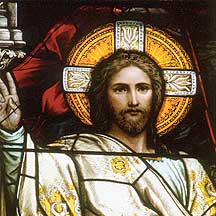
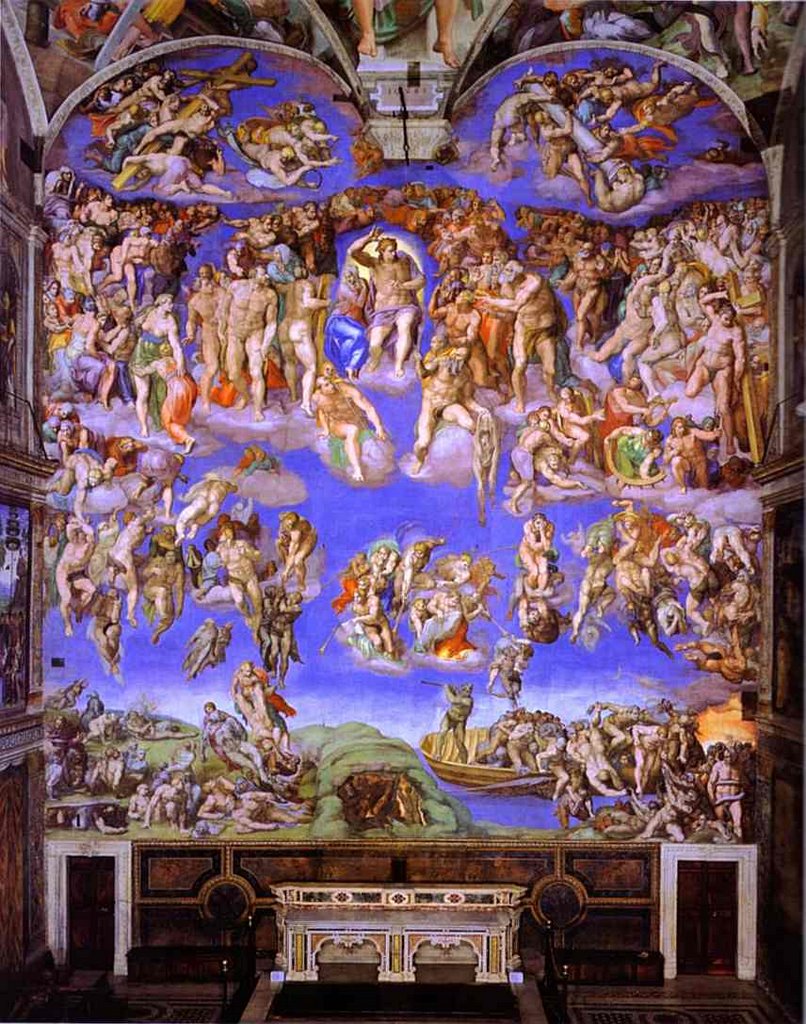


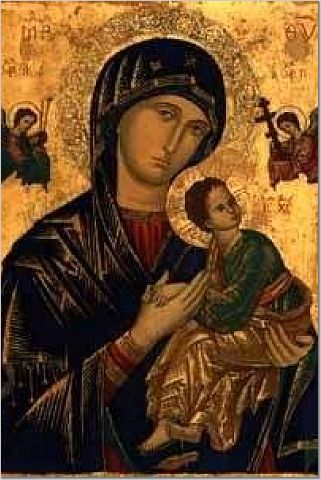



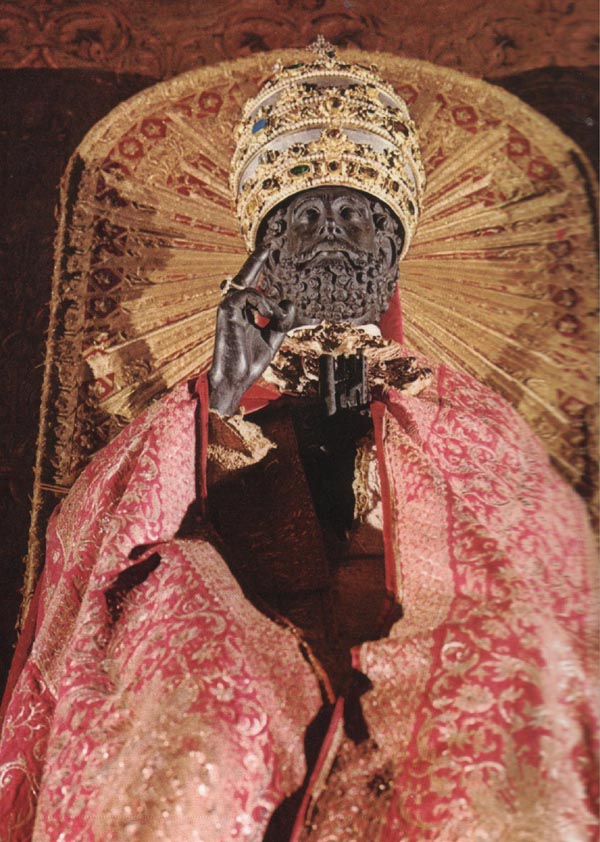
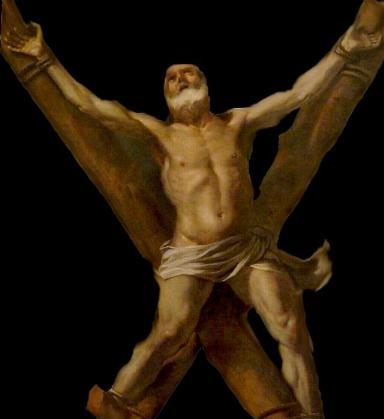

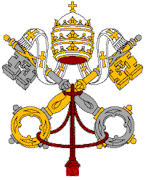


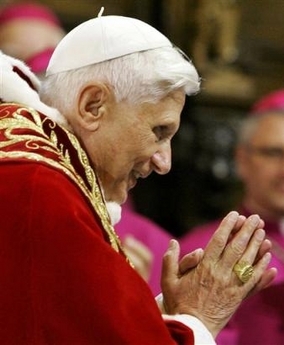






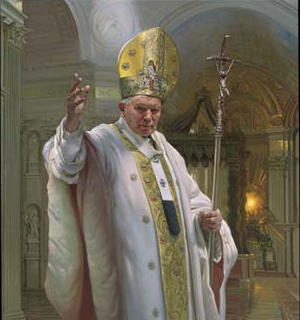
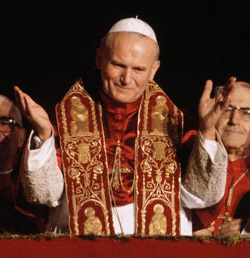
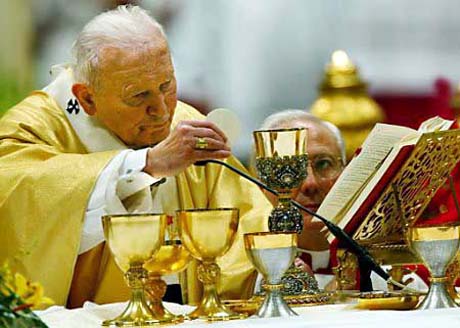
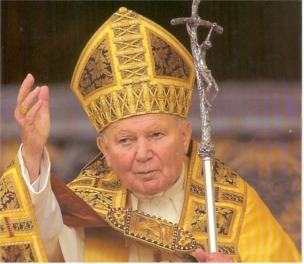






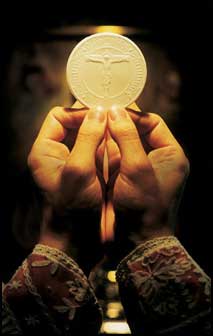
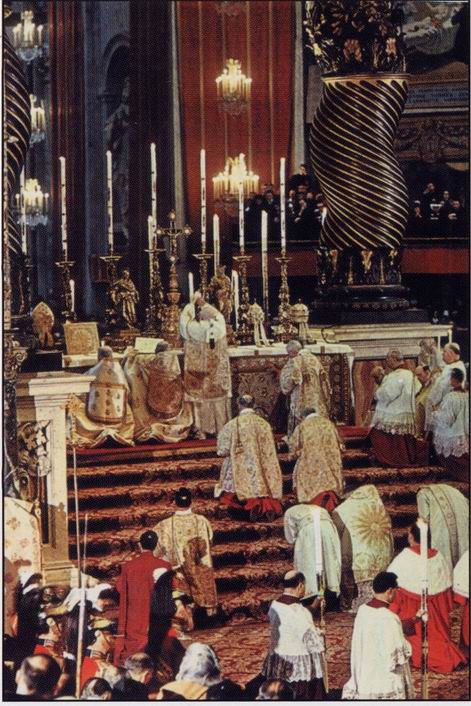



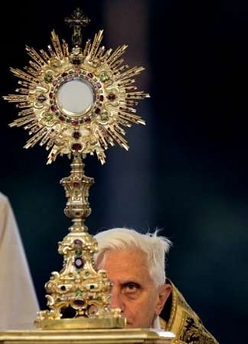


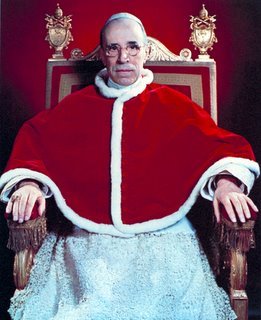




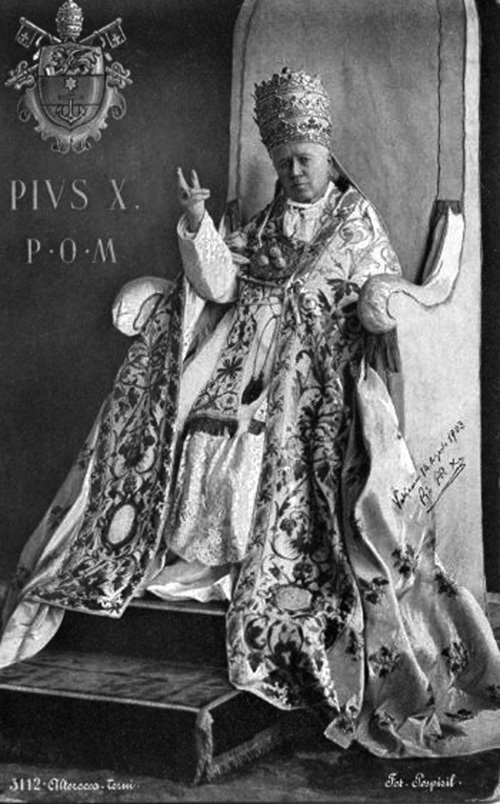










4 comments:
very thought provoking...
The thirst for beauty and the sacred in our Liturgy is one of the greatest woes of our generation.
May you fight the good fight and strive to re-introduce all that is good, beautiful and true in the Liturgy of your parish.
You may be interested in http://thenewliturgicalmovement.blogspot.com
There are many suggestions there on what you can do in this regard.
God bless.
A wonderfully honest and poignant testimony. I hope and pray that this point of view will be more and more listened to in the church.
You are in my prayers. All of us abandoned traditional Catholics will glady suffer with you.
Post a Comment